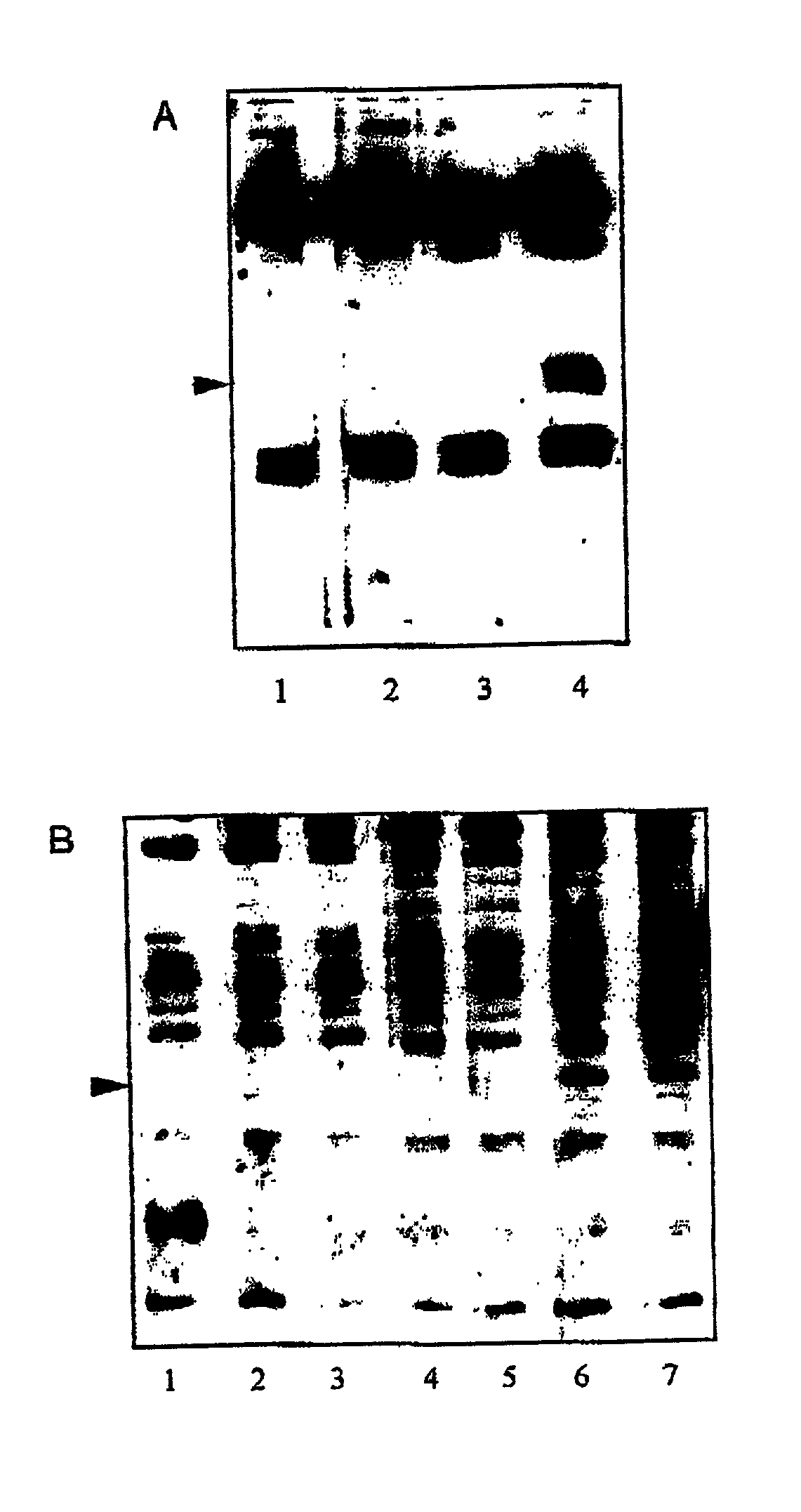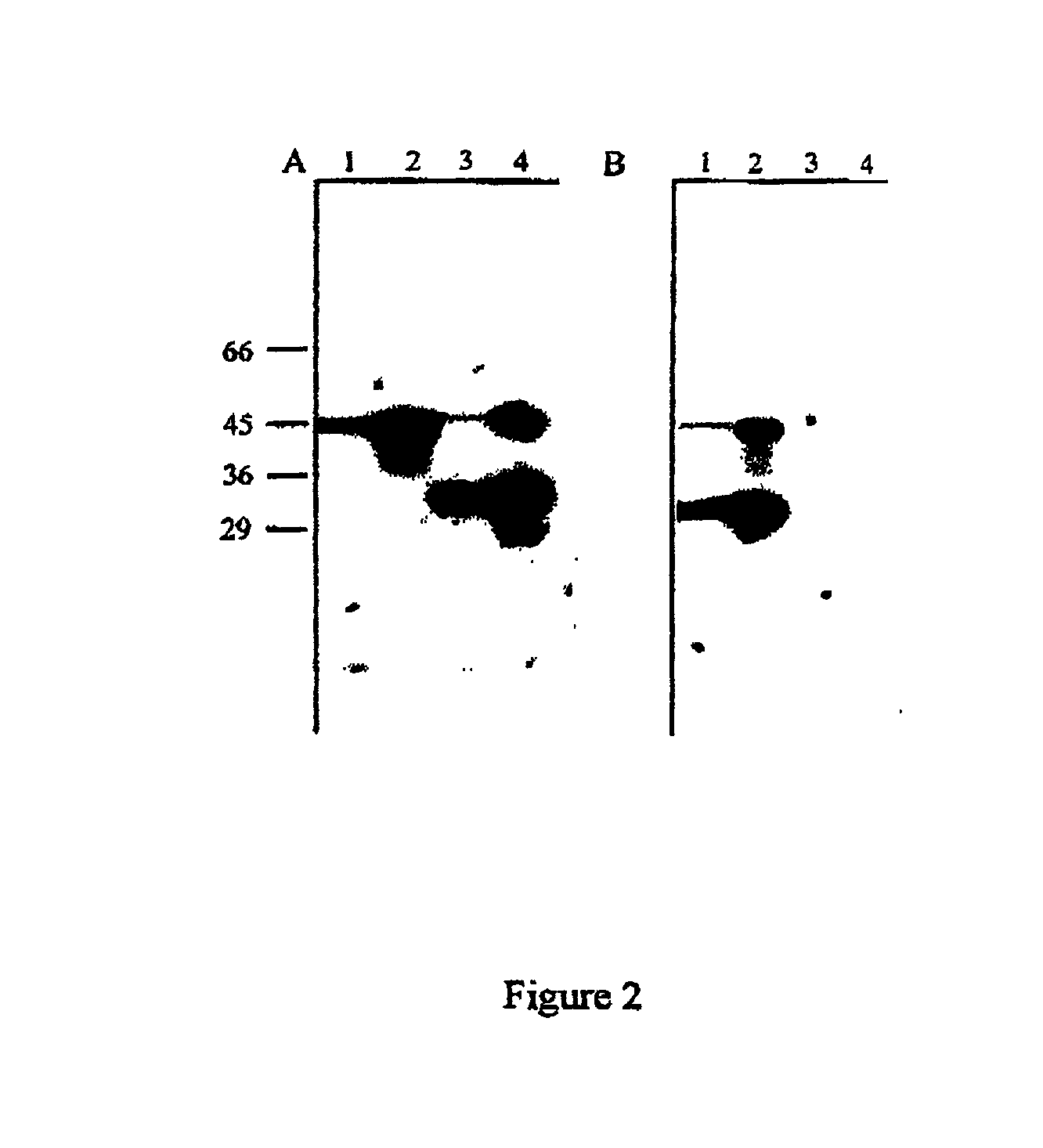Clostridium difficile vaccine
- Summary
- Abstract
- Description
- Claims
- Application Information
AI Technical Summary
Benefits of technology
Problems solved by technology
Method used
Image
Examples
example 2
[0099] Further Characterisation of Protective Antigens
[0100] Materials and Methods
[0101] Partial purification and N-terminal sequencing of the 33 kDa and the 31 kDa proteins
[0102] The antigens were partially purified from C. difficile based on their molecular weight using preparative continuous-elution SDS-PAGE on a model 491 Prep-Cell (Bio-Rad). The appropriate antigens were subsequently identified on Western blots probed with serum obtained from individuals who recovered from C. difficile infection.
[0103] Preparation of Surface Layer Proteins (SLPs)
[0104] SLPs were purified from C. difficile by extracting washed cells with 8 M urea, in 50 mM Tris HCl, pH 8.3 in the presence of a cocktail of protease inhibitors (Complete.RTM., Boehringer Mannheim), for 1 h at 37.degree. C., followed by centrifugation for 19 000.times.g for 30 min. The SLPs were recovered in the supernatant and dialysed to remove the urea [Cerquetti et al., 2000].
[0105] Results
[0106] The immunodominant protein which...
PUM
| Property | Measurement | Unit |
|---|---|---|
| Volume | aaaaa | aaaaa |
| Volume | aaaaa | aaaaa |
| Volume | aaaaa | aaaaa |
Abstract
Description
Claims
Application Information
 Login to View More
Login to View More - R&D
- Intellectual Property
- Life Sciences
- Materials
- Tech Scout
- Unparalleled Data Quality
- Higher Quality Content
- 60% Fewer Hallucinations
Browse by: Latest US Patents, China's latest patents, Technical Efficacy Thesaurus, Application Domain, Technology Topic, Popular Technical Reports.
© 2025 PatSnap. All rights reserved.Legal|Privacy policy|Modern Slavery Act Transparency Statement|Sitemap|About US| Contact US: help@patsnap.com



